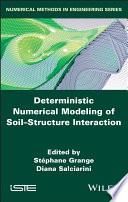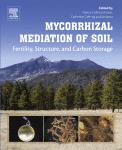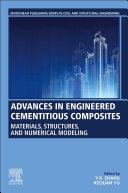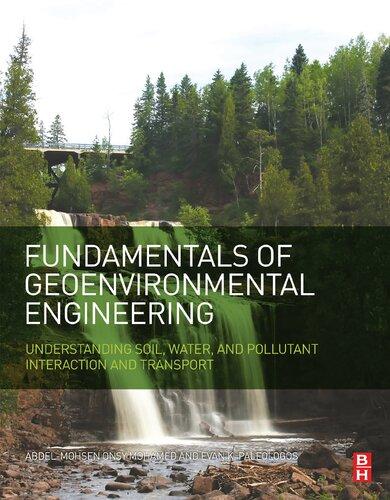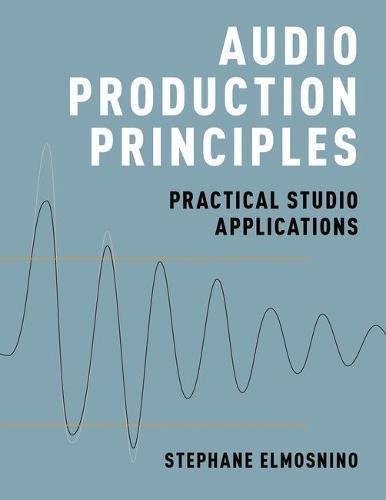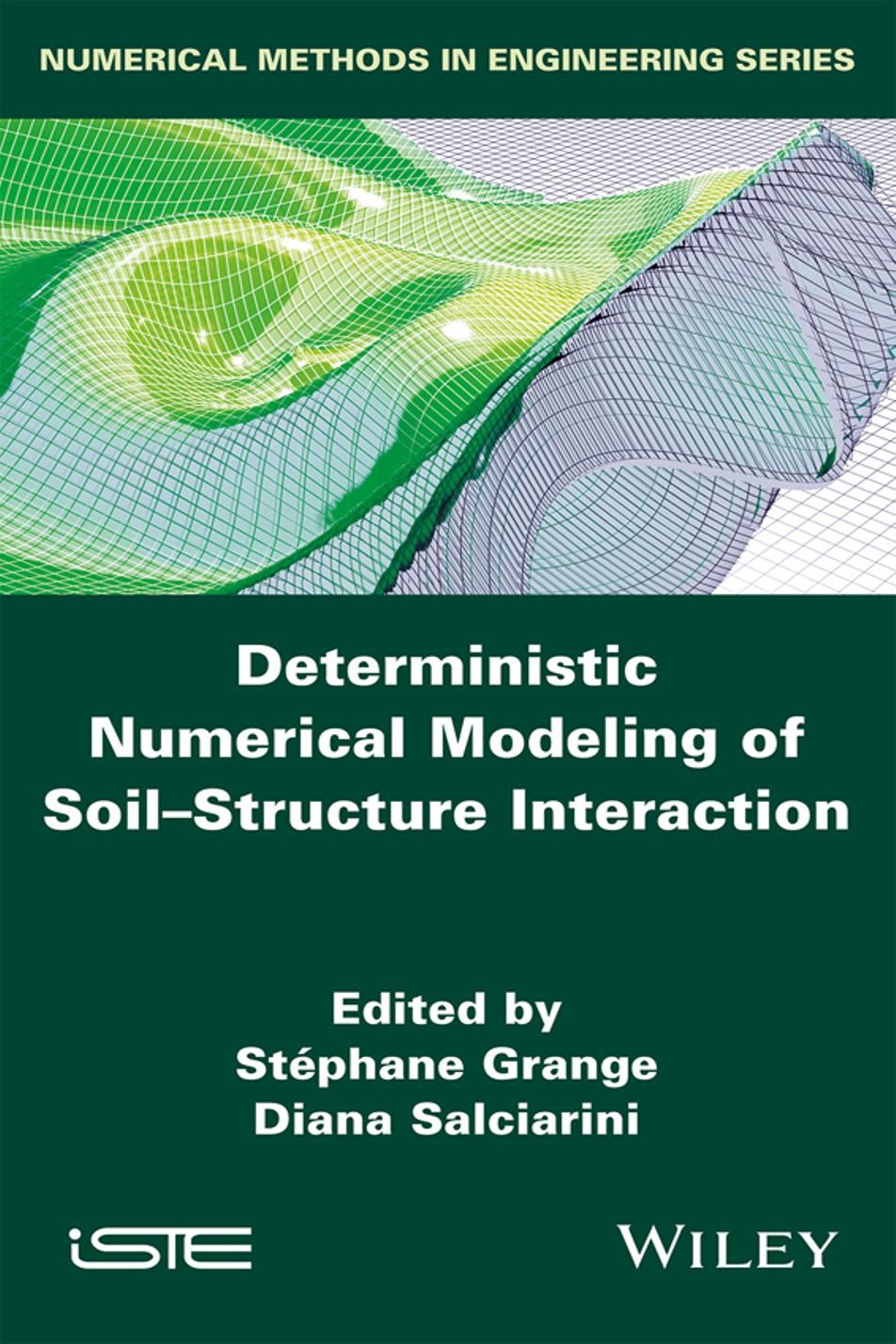Visit to download the full and correct content document: https://ebookmass.com/product/deterministic-numerical-modeling-of-soil-structure-int eraction-1st-edition-stephane-grange/
More products digital (pdf, epub, mobi) instant download maybe you interests ...
Deterministic and Stochastic Modeling in Computational Electromagnetics Dragan Poljak
https://ebookmass.com/product/deterministic-and-stochasticmodeling-in-computational-electromagnetics-dragan-poljak/
Mycorrhizal Mediation of Soil. Fertility, Structure, and Carbon Storage 1st Edition Edition Nancy Collins Johnson
https://ebookmass.com/product/mycorrhizal-mediation-of-soilfertility-structure-and-carbon-storage-1st-edition-edition-nancycollins-johnson/
Soil Mapping and Process Modeling for Sustainable Land Use Management 1st Edition Edition Paulo Pereira
https://ebookmass.com/product/soil-mapping-and-process-modelingfor-sustainable-land-use-management-1st-edition-edition-paulopereira/
Advances in Engineered Cementitious Composite Materials, Structures, and Numerical Modeling Y. X. Zhang
https://ebookmass.com/product/advances-in-engineeredcementitious-composite-materials-structures-and-numericalmodeling-y-x-zhang/
Peridynamic Modeling, Numerical Techniques, and Applications Erkan Oterkus
https://ebookmass.com/product/peridynamic-modeling-numericaltechniques-and-applications-erkan-oterkus/ Fundamentals of Geoenvironmental Engineering. Understanding Soil, Water, and Pollutant Interaction and Transport Abdel -Mohsen Onsy Mohamed
https://ebookmass.com/product/fundamentals-of-geoenvironmentalengineering-understanding-soil-water-and-pollutant-interactionand-transport-abdel-mohsen-onsy-mohamed/
Multiphysics Modeling: Numerical Methods and Engineering Applications: Tsinghua University Press Computational Mechanics Series 1st Edition Cen
https://ebookmass.com/product/multiphysics-modeling-numericalmethods-and-engineering-applications-tsinghua-university-presscomputational-mechanics-series-1st-edition-cen/
Audio Production Principles: Practical Studio Applications 1st Edition Stephane Elmosnino
https://ebookmass.com/product/audio-production-principlespractical-studio-applications-1st-edition-stephane-elmosnino/
Fundamentals of Soil Ecology 3rd Edition
https://ebookmass.com/product/fundamentals-of-soil-ecology-3rdedition/
Deterministic Numerical Modeling of Soil–Structure Interaction
Series
Editor Marc Boulon
Deterministic Numerical Modeling of Soil–Structure Interaction
Edited by Stéphane Grange
Diana Salciarini
First published 2021 in Great Britain and the United States by ISTE Ltd and John Wiley & Sons, Inc.
Apart from any fair dealing for the purposes of research or private study, or criticism or review, as permitted under the Copyright, Designs and Patents Act 1988, this publication may only be reproduced, stored or transmitted, in any form or by any means, with the prior permission in writing of the publishers, or in the case of reprographic reproduction in accordance with the terms and licenses issued by the CLA. Enquiries concerning reproduction outside these terms should be sent to the publishers at the undermentioned address:
ISTE Ltd
John Wiley & Sons, Inc.
27-37 St George’s Road 111 River Street London SW19 4EU Hoboken, NJ 07030
UK USA
www.iste.co.uk
www.wiley.com
© ISTE Ltd 2021
The rights of Stéphane Grange and Diana Salciarini to be identified as the authors of this work have been asserted by them in accordance with the Copyright, Designs and Patents Act 1988.
Library of Congress Control Number: 2021947467
British Library Cataloguing-in-Publication Data
A CIP record for this book is available from the British Library
ISBN 978-1-78630-798-9
Chapter 2. DEM Approach for the Modeling of Geotechnical Structures
Pascal VILLARD
2.1. Introduction
2.2. Discrete modeling
2.2.1. General concepts of the discrete modeling
2.2.2. Specific interaction between discrete particles and reinforcement
2.2.3. Numerical strategy for geotechnical structure modeling using
2.3. Application of the DEM to geotechnical structures in interaction with rigid piles
2.3.1. Load transfer mechanisms within granular embankments over a network of piles ................................
2.3.2. Load transfer mechanisms within granular embankments over a network of piles under cyclic loadings
2.4. Application of the DEM to geotechnical structures in interaction with flexible and deformable reinforcement – comparison with experiment results
2.4.1. Numerical and experimental behavior of geosynthetic tubes filled with granular
2.4.2. Numerical and experimental behavior of granular embankments reinforced with geosynthetic in areas prone to subsidence
Daniel
3.1.
3.2.
3.3. Application of the finite difference method to soil–structure
3.3.1.
3.3.3. Constitutive models for
3.3.4. Dimension of the problem
3.3.5. Monotonic, quasi-static cyclic and dynamic loadings
3.4. Some application examples in the geotechnical engineering
3.4.1.
3.4.2.
3.4.3.
Chapter 4. Macroelements for Soil–Structure Interaction
Diana S ALCIARINI, Stéphane G RANGE, Claudio TAMAGNINI and Panagiotis KOTRONIS
4.1. Introduction
4.2. The concept of generalized forces: Eurocode
4.3. Macroelements for shallow
4.3.2. Macroelements formulated in the framework of hardening
4.3.3. Macroelements formulated in the framework of hypoplasticity
4.4. The considered macroelements
4.4.1.
4.4.2.
4.5. Case
4.5.1.
4.5.2.
4.5.3.
4.6. Calibration of the macroelements
4.7. Results of the
4.7.1.
4.7.2.
4.8.
4.9.
Chapter 5. Urban Seismology: Experimental Approach to Soil–Structure Interaction Towards the Concept
Philippe G UÉGUEN, Philippe ROUX and Andrea C OLOMBI
5.1. Introduction
5.1.1.Observation of soil–structure interaction under weak and strong seismic
5.1.2. Contamination of urban seismic motion by the vibration
5.1.3.
5.2.
Introduction
The deterministic numerical modeling of Soil–Structure Interaction (SSI) uses the tools of Mechanics, and of their transposition, according to the methods of the numerical discretization. An SSI analysis should take into account the differences between the properties of the soil and the structure, possibly leading to local relative displacements. In addition, the presence of water enforces to consider the interaction on the hydro-mechanical framework, involving pore pressures and fluid flow.
Non-deterministic methods, making use of artificial intelligence and progressive learning, are not considered here.
The geotechnical works are usually designed referring to the following three situations:
1) The pseudo-static case: where the loadings are nearly time independent (a small number of cycles are accepted).
2) The cyclic case: involving a large number of slow cycles (slow versus the time scales of any physical phenomena involved).
3) The dynamic (mostly seismic) case: where inertia forces are taken into account.
In the pseudo-static and cyclic cases, the SSI is defined from a local point of view, whereas in dynamic conditions it is examined from a more global angle. The soil–structure interfaces, transfer zones of the loads acting between soil and structure, and often zones of large localized deformations have a significant importance. Special strategies and experimental characterization tests have been developed for describing them.
This volume gives an overview on the main modeling methods developed in geotechnical engineering in order to describe the SSI in various situations:
x Deterministic Numerical Modeling of Soil–Structure Interaction
– The classical and well-known finite element method (FEM) using interface or contact elements available for coupled hydro-mechanical problems and in which the local plastic energy dissipation contributes to the classical global damping.
– The distinct element method (DEM) in which the contact zones between soil and structure are described by local adapted interaction laws.
– The finite difference method (FDM) using explicit algorithm in which interface or contact elements are available and straightforward for coupled hydro-mechanical, highly nonlinear with high deformation and dynamic problems.
– The more recent approaches based on the macro-element concept and generalized variables in an incremental form available in static and dynamic situations, where a large volume of soil underlying and surrounding the-structure is represented by a small number of degrees of freedom. This method could be considered as an improved extension of the stiffness coefficient methods known for the piles as the t-z and p-y curves.
– The seismology approach with inertia and viscous equivalent damping forces, in which the SSI is developed between several structures (like buildings in a town) using the notion of meta-materials. This point of view is especially useful when analyzing the movement of the buildings induced by a seismic event at the scale of a town.
Hydro-mechanicallyCoupledInterface
Thischapterpresentshowthemultiphysicalsoil–structureinteractionscanbe modeledusingthefiniteelementmethod(FEM).Thismethodtakesintoaccount differentnonlinearities,duetogeometry,materialbehavior,physicalcouplingsand interfaces.TheFEMallowsthevolumetobediscretizedintoafinitenumberof elementsandafinitenumberofdegreesoffreedom.Thenumericaltechniquesfor solvinganonlinearproblemintheframeworkoftheFEMhavebeenextensively studiedandarenowveryrobust.
Thebehaviorofoffshorefoundationsishighlydependentoninterfaceproperties. Uponlargeoverturningmomentorlateralload,thesoil–structureinteractionresults inrotation,slidingorgapopening.Hydro-mechanicalcouplingshavebecome particularlyimportantinmanyapplications,astheloadingrateandsoilpermeability aresuchthatthesoilbehaviorisnotcompletelydrainedorundrained.
Ahydro-mechanicallycoupledinterfaceelementisproposedinthisworkto simulatethebehaviorofsuctioncaissonsembeddedinsand.Thisinterfaceelement simulatesthemechanicalproblemwithapenaltymethodandreproducesthefriction attheinterfaceasasimpleCoulombmodel.Theinterfaceelementintroduceshydromechanicalcouplingsbasedonthegapopening(storage,longitudinalpermeability evolution)andthedefinitionofaneffectivecontactstress.
ChapterwrittenbyBenjaminC ERFONTAINE andRobertC HARLIER
1.1.Introduction
Theadventofnumericalmethodsand,especially,finiteelementapproacheshas providedengineerswithformidabletoolstopredictthebehaviorofconstructions. Mostofthetime,thesoilcanbeconsideredasahomogeneousmediumbehavingin apurelydrainedorundrainedmanner.However,insomecases,dependingonthesoil permeabilityandtheloadingrate,partiallydrainedbehaviorsshouldbeconsidered. Inthiscase,hydro-mechanicalcouplingsmustbeincludedinthefiniteelement formulationforbothvolumeandinterfaceelements.
Thedevelopmentofrenewableenergysourcesisthegreatestchallengeofthe21st Century.Alargenumberofoffshorewindfarmshavebeendevelopedthroughoutthe lastdecade,especiallyinshallowwatersintheNorthSeawhereasandyseabedis mostlyencountered.Theoffshorewindindustryisexpectedtogrowexponentially, followedbythedevelopmentofmorerecentwaveandtidalenergydevices.Whether theyarebottom-fixedorfloating,theirfoundationsoranchorswillhavetobedesigned. Thefiniteelementsimulationofanchorsandfoundationshasbecomemorepopular amongoffshorewindfarmdesigners.However,themodelingoftheinterfacebetween thesoilandthefoundationsisstillveryrudimentary.
Fromthemechanicalpointofview,shearingalongtheinterfacesparticipatesinthe strengthofthefoundationagainstappliedloadsinanydirection(horizontal,vertical ormoment).Whenthemaximumcapacityisovercome,slidingoccursbetweenthe soilandthefoundation.Eachmovementofthefoundationresultsinafluidflow,since itliesunderthesea.Thisaffectstheinterfacebehaviorbymodifyingthemaximum shearstressavailableorbyinducingasuctioneffect,becauseofagapopening(e.g.for suctioncaissons).Thefiniteelementmodelingofthesecomplexinteractionsatthe interfaceisthetopicofthischapter.
1.1.1. The finiteelementmethod(FEM)
Thefiniteelementmethod(FEM)isoneofthemostpopularnumericalmethodsfor solvingpartialdifferentialequationsforboundaryvalueproblems[ZIE00].Themain conceptofthemethodistodecomposetheentirecontinuumdomaintobemodeled intoacollectionofsubdomains,calledelements.Thecontinuumfieldofanyphysical variableofinterest(e.g.displacement,porewaterpressure)isapproximatedovereach element,basedonafinitenumberofvariables(physicalunknowns)andpre-defined interpolationfunctions.Thepartialdifferentialequationsthatmustbesolvedoverthe entirecontinuumdomaincanthenbeapproximatedanddiscretizedforeachelement. Thesetofdiscreteequationsassociated witheachelementcan becombinedintoa singleglobalsystemandsolvedalgebraically.Thesolutionofthissetofequations istheonethatminimizestheerroroftheapproximationwithrespecttotheactual
Hydro-mechanicallyCoupledInterfaceFiniteElement3
solution.TheFEMhasmanyadvantages,suchastheabilitytosimulatecomplex geometries,incorporatedifferentconstitutivelaws,involvemultiphysicalcouplings andanalyzestressandinternalvariableslocally.
1.1.2. Reviewofexistingcontactformulations
Numericallysolvingthemechanical contactproblemisnotarecenttopic,and severalbookshavebeendedicatedtothisissue[JOH92,WRI06].Withinthe frameworkoffiniteelementmethods,twogeneralapproachesexistinordertomanage contactbetweentwosolidbodies,namelythethinlayerandthezero-thickness approach,asshowninFigure1.1.
Thefirstapproachconsistsofexplicitlymodelingthecontactzonewithspecial finiteelements,designedtoencounterlargeshearorcompressiondeformation [DES84,SHA93,WRI13,WEI15].Thesecondapproach,adoptedinthefollowing, involvesspecialboundaryelementswhichhavenothickness,namelyzero-thickness elements[GOO68,CHA88,DAY94,HAB98,WRI06].Theydiscretizeapotential zoneofcontact.Agapbetweeneachsideoftheinterfaceandaprobableothersolidis computedateachtimesteptodetectcontact.Threemainingredientsarenecessaryto formulatethisapproach:
–acriteriontorulethecontactdetection/lossandcontactpressureevolution; –aconstitutivelawtodescribetheshear/normalbehavior(s); –atechniquetodiscretizethecontactareabetweensolidsandtocomputethegap function gN ,namelythedistancebetweentwosolids.
Figure1.1. Comparisonbetweenthethinlayerandzero-thickness approachesinthecaseofHertziancontact(source:[CER15])
Thenormal contactconstraint ensuresthattwoperfectlysmoothsolidsincontact donotoverlapeachother.Thismathematicalcriterionrelatesthegapfunction gN and thecontactpressure pN .Itstatesthatwhenthegapisnull,thesolidsareincontact andacontactpressurepreventstheiroverlapping.Whenthepressureisequaltozero andthegapisgreaterthanorequaltozero,thereisnocontact.
Therelationshipbetweengapandpressureevolutioncanbetermedas high precision or lowprecision.Inthefirstcase,thisrelationshipisphysicallybasedand thepressureincreaseswithagapthatcanbe negative,leadingtointerpenetration (gN < 0).Thisisespeciallytrueinrockmech anics,wheresurfacesincontactare notperfectlysmoothandthenormalpressureincreaseswithdeformationofasperities [GEN90].
Alow-precisioncontactisensuredonapurelygeometricalbasis.Twosurfaces ofbodiesincontactareconsideredtobeperfectlysmoothandinterpenetrationis theoreticallynotallowed(gN ≤ 0)[WRI04].Thereareonlytwostates:incontact ornotincontact.The Lagrangemultiplier methodexactlyensuresthiscondition [BEL91,WRI06].Lagrangemultipliersareintroducedtoenforcetheconstraint,and correspondtothecontactpressures.Ontheotherhand,thepenaltymethod[HAB98] regularizestheconstraintbyauthorizingalimitedinterpenetrationofthesolidsin contact.Thecontactpressureislinearlyproportionaltothisinterpenetrationbya coefficientcalledthepenaltycoefficient.BothmethodsarecomparedinFigure1.2.
Figure1.2. ComparisonbetweenLagrangemultiplier andpenaltymethodsondeformationanddistributionof contactpressures(source:[CER15])
Thepenaltymethodisadoptedinthefollowingforitssimplicity,sinceitdoes notrequireustointroduceavariablenumberofunknowns(Lagrangemultipliers)at eachstep.Bothsolutionsaretheoretically identicalifthepenaltycoefficienttends
Lagrange multiplier method
toinfinity.However,increasingthiscoefficienttoomuchcreatesabadlyconditioned stiffnessmatrix,whichbecomesdifficulttosolve.
Themobilizationofshearstressalongtheinterfaceisveryimportantinmany applications.Themaximumshearstressthatcouldbemobilizedinatangentialplane isstronglydependentonthenormalpressure.Themostbasicrelationshipbetween themistheclassicalCoulombcriterion.However,similartothenormalbehavior, morecomplexconstitutivelawsmaybedefined:forexample,todescriberockjoints [ALO13,ZAN13]orsoil–structureinterfaces[LIU06,STU16],includingcritical state,weusedilativenormalbehaviorandevencyclicdegradation[LIU08].
Thenormalcontactconstraintisdefinedasacontinuousconditionoverthe boundariesofthesolidsincontact.Itmustbediscretizedinthefiniteelement framework.Computationofthegap(gN )andenforcementofthecontactconstraint aredifferentdependingonthemethod,asshowninFigure1.3.
Figure1.3. Comparisonbetweenthediscretizationmethods ofthecontactarea(source:[CER15])
Thesimplestmethod,namely node-to-node discretization,imposestheconstraint onapairofnodes[KLA88],limitingtheproblemstosmallrelativetangential displacement.The node-to-segment discretizationovercomesthisdrawback [HAL85].Thegapfunctioniscomputedbytheprojectionofanodeofoneside, termedthe slavesurface,onasegmentoftheotherside,termedthe mastersurface. Thismethodissensitivetosuddenchangesintheprojectiondirection,butsmoothing techniquesstronglyreducethisissue[WRI01].The contactdomain discretization doesnotinvolveanyprojectionmethod[OLI09,HAR09].Thegapbetweenthesolids potentiallyincontactisdiscretizedbyafictitiousmesh.Therefore,thegapfunction iscontinuousbetweenthemandavoidsmanydiscrepanciesandlossofunicitydueto projection.
The segment-to-segment discretization[HAB98,PUS04,FIS06]isbasedonthe mortarmethoddevelopedin[BEL98].Inthiscase,thecontactconstraintisapplied overtheelementinaweaksense.Thegapfunctioniscomputedbytheclosest-point projectionofapointofthenon-mortarsurfaceontothemortarsurface,whichisgiven moreimportance.Inthefollowing,thismethodisadopted.Thedistanceiscomputedat eachintegrationpointoftheelementandextrapolatedoveritbymeansofinterpolation functions.
Inmanyexamples,interfacesmaybeconsideredaspreferentialpathsforfluid flows.Therefore,adescriptionofalongitudinalfluidflow,namelyparalleltothe interface,mustbedefined.Boussinesq[BOU68]firstprovidedamathematicallaw thatcharacterizedthelaminarflowofaviscousincompressiblefluidbetweentwo smoothparallelplates.Thetotalfluidflowwasprovedtobeproportionaltothecube oftheaperturebetweentheplates,andthisrelationshipwastermedthe cubiclaw.The applicabilityofthislawtorockmechanicswasproven[WIT80,TSA81,ORO98] undersomehypotheses[OLS01].
Theflowproblemwithininterfacesmaybetreatedsimilarlytothemechanical contactproblembyspecialvolumeelements[THI14]orthezero-thicknessmethod [GUI02,SEG08a].Thesecondapproachisfurtherdevelopedinthefollowingtobe consistentwiththemechanicalformulation.Theflowproblemisintrinsicallycoupled withthemechanicalproblemthroughtheopening/closingofthegap.Inadditionto theflowalongtheinterfacedirection,transversalflowalsooccurs,causingadropof pressurebetweenthetwosides.Twobasicingredientsarenecessarytodescribethis part:
–alawrelatingtheflowtothegradientofpressure(transversal/longitudinal); –atechniquetodiscretizetheflowwithinandthroughtheinterface.
The single-node discretizationofflowisthesimplestone,asshowninFigure1.4. Itsimplysuperposesadiscontinuityforfluidflowintoacontinuousporousmedium [BER88].Inthiscase,thereisnohydro-mechanicalcouplingandtheopeningofthe discontinuityisconstantanduser-defined.Itactsasapipe.
The double-node discretizationconsidersthelongitudinalgradientsofpressureon eachsideoftheinterface.Thelongitudinalflowdependsontheaveragegradient.The transversalflowisafunctionofthetransversaldifferencebetweenthepressureanda parametercalledtransversaltransmissivity[NG97,GUI02,SEG08a,SEG08b].In thiscase,themechanicalandflowbehaviorsoftheinterfaceareabletocoexistand arecoupled.
Thelastoptiondissociatesthediscretizationofthelongitudinalflowfromboth sidesoftheinterfacebyaddingnodesinsidetheinterface.Thenodeshaveonlya singlepressuredegreeoffreedom.Thismethodistermed triple-node discretization
Hydro-mechanicallyCoupledInterfaceFiniteElement7 [GUI02,JHA14,CER15].Theunderlyinghypothesisisthatthefieldofpressureis homogeneousinsidetheinterface.Inthiscase,therearetwodropsofpressurebetween eachsideoftheinterfaceandinsidetheinterface.
Figure1.4. Comparisonbetweenthediscretizationmethodsoftheflow withinandthroughtheinterface(source:[CER15])
1.1.3. Objectives
Thefirstobjectiveofthischapteristoprovideabasicformulationofhydromechanicallycoupledfiniteelementsof theinterface.Thedevelopmentsare sufficientlygeneraltobeappliedtoanyfiniteelementcode.Inaddition,any constitutivelaw,fromthemostsimpletothemostcomplicated,canbeinserted intothisformulation.Thegoverningequationsandfiniteelementformulationsare providedinsections1.2and1.3.
Thesecondobjectiveistohighlighttheimportanceofconsideringhydromechanicallycoupledinterfacesinthesoil–structureinteraction.Anexampleof suctioncaissonmodelingisprovidedinsection1.4toillustratetheinherentlypartially drained(betweendrainedandundrained)behaviorofthisfoundationintheoffshore environmentandhowinterfaceelementsareusedtosimulatethisbehavior.
1.2.Governingequationsoftheinterfaceproblem
Theinterfacefiniteelementismodeledusingthezero-thicknessapproach,which doesnotrequireanyremeshingtechnique.Thecontactconstraintisenforcedby apenaltymethodthatiseasytoimplementanddoesnotrequireanyadditional unknowns.Themechanicalconstitutivelawrulingtheshearbehavioristheclassical Coulombmodel.Thefluidflowproblemissolvedusingathree-nodediscretization. Thecouplingsarisefromthevariationofstorageandpermeabilitywithgapopening,
aswellasthedefinitionofaneffectivestress.Thepurposeofthissectionistoderive themainequationsoftheproblemandtoformulatethecontinuuminterfaceproblem.
1.2.1. Mechanicalproblem
1.2.1.1. Definitionofthemechanicalproblemandgapfunction
Letusconsidertwodeformableporousmedia Ω1 and Ω2 intheircurrent configurationsattimet.Theglobalsystemofcoordinatesistermed (E1 , E2 , E3 ).A 2Dcross-sectionofthesebodiesisillustratedinFigure1.5.Theirevolutionisassumed tobequasi-static.Theirboundariesincurrentconfigurationsaredenotedby Γ1 and Γ2 Imposeddisplacement(Dirichlet)andtraction(Neumann)boundariesarerespectively denotedby Γi u and Γi
Figure1.5. Statementofthemechanicalproblemandcross-sectionof the3Dprobleminthe (E1 , E2 ) plane(source:[CER15])
Γ1 c and Γ2 c denotebothpartsoftheboundarywherecontactislikelytooccur.In thisarea,alocalsystemofcoordinates (e1 1 , e1 2 , e1 3 ) isdefinedalongthemortarside Γ1 c ,asshowninFigure1.5,where e1 1 denotesthenormaltothesurface.Theclosestpointprojection x1 ofapointof x2 oftheboundary Γ2 c onto Γ1 c isdefinedsuchthat [WRI06]
gN = x 2 x 1 e 1 1 ,
[1.1]
where (e1 1 , e1 2 , e1 3 ) denotesthelocalsystemofcoordinatesatpoint x1 .Thisfunction gN isreferredtoasthegapfunction,wherethesubscript N standsforthenormal direction.Ifthereisnocontactbetweenthesolids, gN ispositive.Thecontactis termed ideal ifthereisnointerpenetrationofthesolids.Thiscanbeenforcedif theLagrangemultipliermethodisused.However,ifthepenaltymethodisused, interpenetration(negativegapfunction)is necessarytogeneratethecontactpressure.
Thedefinitionofarelativetangentialdisplacementbetweentwopointsintheplane ofcontacthasnomeaninginthefieldoflargedisplacement[HAB98].Rather,normal
(N )andtangential(T1 and T2)velocitiesaredefinedinthelocalsystemofcoordinates. Theyaregatheredintothevector g suchthat
1.2.1.2.
Normalcontactconstraint
Thecontactbetweentwosolidsgivesrisetonon-zerostressvectors t1 = t2 alongtheircommonboundary,asshowninFigure1.5.Thesevectorsaredescribedin thecorrespondinglocalsystemofcoordinatesateachcontactpointsuchthat
where pN isthenormalpressure,and τ1 and τ2 aretheshearstressesinbothdirections intheplaneoftheinterface.Theidealcontactconstraintissummarizedintothe Hertz–Signorini–Moreaucondition[WRI06]:
Ifthereisnocontact,thegapfunction gN ispositiveandthecontactpressure pN isnull.Incaseofcontact,thegapfunctionisnullandthecontactpressureispositive.
Thisconditionisnolongerverifiedifthepen altymethodisused.Incaseofcontact, therelationbetweenthepressureandthegapfunctioncanbewrittenas
wheretheminussignensuresthatthecontactpressureispositivewheninterpenetrationincreases,i.e. gN < 0 and ˙g N < 0.
1.2.1.3. Tangentialcontactconstraint
Whensolidsareincontact,theidealtangentialbehavioroftheinterface distinguishesbetweenthe stick and slip states[WRI06].Intheformerstate,two pointsincontactcannotmovetangentially,i.e.theyremainstucktogetherduring thesimulation,i.e. ˙g T 1 =0 and ˙g T 2 =0.Thesecondconditioninvolvesarelative tangentialdisplacementintheplaneofthe interface.Thisissummarizedinacondition similartoequation[1.4]:
where ˙g sl Ti isthevariationofthenon-recoverabledisplacementineachtangential direction.Itisrelatedtothevariationoftangentialdisplacement
The stick and slip statesaredistinguishedbythecriterion f (t, q).Itdependsonthe stressstate t andasetofinternalvariables q.Theevolutionofthestressstatewithin theinterfacedependsontheconstitutivelawdescribedhereafter.
Theideal stick state, gT =0,isalsoregularizedbythepenaltymethod,i.e.a relativedisplacementisallowed.Therefore, therelationbetweentheshearstressand thetangentialvariationofdisplacementisgivenby
1.2.1.4. Constitutivelaw
TheconstitutivelawadoptedisasimpleCoulombmodeldespitetheactual behaviorofthesoil–structureinterface,androckjointsareprovedtobemorecomplex thanthissimplecriterion[HU04,DEJ06,HO11,ZAN13].However,theconstitutive lawiskeptasbasicaspossible,sincetheexamplespresentedarecomplexenough. Ontheotherhand,anynonlinearrelationbetweenstressandstrainincrementscan besubstitutedintotheequationspresentedbelow.Theinterestedreadershouldrefer to[SHA97,MOR02,LIU08,STU16]foradeeperinsightintomorecomplex constitutivelaws.
Theconstitutivelawdependsonlyonthestressstate t withintheinterfaceanda singleparameter,thefrictioncoefficient μ.Mathematically,itcanbewrittenas
where τ isthenormofthetangentialstresses.ThecriterionispresentedinFigure 1.6.Intheabsenceofcontact,thestressstateliesontheapexofthecriterion.Both normalpressureandtangentialstressesarenull,i.e. t = 0.Ifthecombinationof tangentialandnormalstressesliesbelowthecriterion(f< 0),thetangentialstate isconsideredas stick.Otherwise,ifthestressstateliesonthecriterion(f =0),the tangentialstateisconsideredas sliding
Thetangentialbehaviorisregularizedby twoshearpenaltycoefficients.Therefore, thereisnoideal stickstate but,rather,aslighttangentialdisplacementoccurs. Thecriterionmaybeinterpretedasanelastoplasticrelationandtheshearpenalty coefficientsactasshearmoduli,acquiringaphysicalmeaning.Hence,theincremental relationbetweenvariationsofstresses ˙ t andvariationsofthegapfunction ˙ g canbe writtenas
where De isequivalenttotheelasticcompliancetensor.Whentheinterfacereaches theslipstate,anelastoplasticcompliancetensor Dep isdefinedsuchthat
Thistensorwasintroducedin[CHA88],whichisbasedonanon-associatedflow rule.
Nocontact Stick Slip
Table1.1. Stressstateintheinterface
Figure1.6. Mohr–Coulombcriterion(source:[CER15])
1.2.1.5. Continuumformulation
Eachsolid Ωi verifiestheclassicmechanicalequilibriumequationsinquasi-static conditions[BOR13].Solvingthemechanicalcontactproblemconsistsoffindingthe fieldofdisplacement u forallpoints x ∈ Ωi toverifytheseequations,subjectedto thecontactconstraintequations[1.4]and[1.6].
Consideringafieldofadmissiblevirtualvelocities δ x on Ωi ,theweakformofthe principleofvirtualpowercanbewrittenas
where f representsthebodyforces, u representstheimposeddisplacements, t representstheimposedtractions, n isthenormalto Γi t and Ti istheprojectionofthe localstresstensor ti inglobalcoordinates.Theequalityofequation[1.12]isenforced whenthecontactarea Γi c isknown.
1.2.2. Flowproblem
1.2.2.1. Definitionoftheproblem
Letusconsideradiscontinuityofverythinwidthembeddedinaporousmedium initscurrentconfiguration,asshowninFigure1.7.Thiscouldrepresent,forexample, anopenfaultwithinarockmassoragapbetweenafoundationandthesurrounding soil.Thisdiscontinuitycreatesapreferentialpathforfluidflow.Moreover,thereisa transversalfluidflowbetweentherockmassandthediscontinuity.
Figure1.7. Definitionoftheflowproblem(cross-section ofthe3Dcaseinthe (E1 , E2 ) plane),porousmedium,discontinuity andboundaries(source:[CER15])
Thereisaconceptualdifferencebetween thetreatmentofthemechanicalandflow contactproblems.Themechanicalcontactconstraintconsistsofanon-zeropressure pN appliedalongthecontactzone Γc betweenthetwosolids Ω1 and Ω2
Onthecontrary,theopeningofthediscontinuitycreatesagap gN filledwitha fluid.Thisgapcreatesanewvolume Ω3 inwhichfluidflowtakesplace,asshown inFigure1.8.Itisboundedbythetwoporousmedia Ω1 and Ω2 .Theirboundaryis termed Γ1 q and Γ2 q .Therefore, Γq representsaboundarywherethesolidsareclose enough,fluidinteractionstakeplaceandmechanicalcontactislikelytooccur.It alwaysincludesthecontactzone Γc .
Ω3 ismodeledasanequivalentporousmedium.Thefluidflowwithinitis describedbythecubiclaw.Fluidflowsexistbetweentheinnervolume Ω3 andboth
Hydro-mechanicallyCoupledInterfaceFiniteElement13
adjacentporousmedia Ω1 and Ω2 .Thisflowisafunctionofthedifferenceofpressure betweenthem.Thisisanon-classicalboundaryconditionsinceitisnotanimposed fluxoranimposedpressure.
Finally,imposedfluxandpressureboundarieson Ω1 and Ω2 arerespectively denotedby Γi ¯q and Γi ¯p w .
Figure1.8. Definitionoftheequivalentinteriorporousmedium Ω3 boundedby Γ1 q and Γ2 q (source:[CER15])
1.2.2.2. Fluidflowformulation
Athree-nodeformulationisadoptedtodescribethefluidflowthroughandwithin theinterface,asdescribedinFigure1.9.Therefore,fluidpressuresoneachsideofthe interface(pw 1 and pw 2 )andtheinnerfluidpressure(pw 3 )arethefluidvariables.At eachpointwithintheinterface,fourfluxesaredefined:
–twolongitudinalfluxes(fwl1 and fwl2 )inthelocaltangentialdirections(e1 2 , e1 3 ) intheplaneoftheinterface;
–twotransversalfluxes(fwt1 and fwt2 )inthelocalnormaldirection(e1 1 ).
ThegeneralizedDarcy’slawisassumedtoreproducethelocallongitudinalfluid flows fwl1 and fwl2 intheplaneoftheinterface.It reads,ineachlocaltangential direction (e1 2 , e1 3 ):
wl(i 1) =
where ∇e1 i isthegradientinthedirection e1 i , μw isthedynamicviscosityofthefluid, gistheaccelerationofgravity, ρw isthedensityofthefluidand kl isthepermeability. Theseequationsmaketheassumptionthatthefluidpressureisconstantoverthegap gN andthegapisfullysaturated.
Figure1.9. Definitionoflongitudinaland transversalflows(source:[CER15])
Eachtransversalfluidfluxisafunctionofatransversalconductivity Twi andthe dropofpressureacross Γi q .Theycanbewrittenas
1.2.2.3. Continuumformulation
Thetwoactualporousmedia(Ω1 and Ω2 )andtheequivalentporousmedium Ω3 verifytheclassichydraulicequilibrium equations[LEW98].Solvingthecontact problemconsistsoffindingtheporewaterdistributionon Ωi toverifytheequilibrium equationsandsatisfythenon-classicalboundaryconditions[1.14]–[1.15]over Γi ˜q . Consideringafieldofadmissiblevirtualporewaterpressures δ pw on Ω,theweak formulationofthevirtualpowerprinciplecanbewrittenas
where fw isthefluidfluxatpoint x, ˙ S isthestorageterm, Q istheimposedvolume source, ¯p w istheimposedfluidpressure, i =1, 2 correspondstothetwoporousmedia incontactand i =3 tothevolumeoftheinterface.Thefluidflow ˜q alongtheboundary correspondstothetransversalfluidflows fwti definedinequations[1.14]and[1.15]. Thesourceterm Q associatedwith Ω3 isnull.
Themechanicalproblemgivesmoreimportancetothemortarside Γ1 c .Similarly, theintegralover Ω3 istransformedintoasurfaceintegralover Γ1 ˜q .Thishypothesisis validbecauseitisassumedthattheinnerpressureisconstantovertheaperture gN of theinterface.Therefore,equation[1.16]for i =3 canbefinallywrittenas
where ∇e1 i isthegradientinthe e1 i direction.
Intheporousmedia Ω1 and Ω2 ,thestoragecomponent ˙ S iscoupledwiththe deformationofthesolidskeleton.Thetreatmentofthiscomponentfor Ω3 isdifferent anddetailedhereafter.
1.2.3. Couplingsbetweenmechanicaland flowproblems
Thecouplingsbetweenmechanicalandflowproblemsdependstronglyonthe gapfunction gN .Thefirstcouplingarisesfromthedefinitionofthecubiclawwith respecttothegapopening(hydraulicandmechanicalopeningsaretreatedasan identicalvariable).Therefore,ifcontactexists,thegapisnegativeandpermeability isequaltozero.However,fromaphysicalpointofview,therecouldbeapathfor fluidflowthroughasperitiesofaroughsurface(residualopening).Moreover,from thenumericalpointofview,anullpermeabilitymayleadtoabadlyconditioned problem.Therefore,averylowresidualopening D0 isadded.Hence,thepermeability iscomputedaccordingto[OLS01,GUI02]
Itisupdatedduringthesimulationtotakeintoaccountthepossiblegapaperture.
Asecondcouplingiscreatedbythestoragecomponent S.Thevariationof thetotalmassoffluid Mf storedin Ω3 comesrespectivelyfromthevariationofthe fluiddensity,theopening/closingofthegapandthevariationofthesurfaceofthe discontinuity,namely
where ˙ S isthestoragetermofequation[1.16].Inthefollowing,thefluidisassumed tobeincompressible ρw =0,andonlythegeometricalstorageistakenintoaccount. Inmanyapplications,themaincomponentof thestorageisduetotheopening/closing oftheinterface ˙g N .
Themechanicalbehavioroftheinterfacealsodependsonthefluidflowwithin it.Indeed,thetotalpressure pN actingoneachside Γi ˜ q oftheinterfaceisdefined accordingtotheTerzaghiprinciple[TER 25].Itisdecomposedintoaneffective mechanicalpressure pN andafluidpressureequaltotheinnerpressure pw 3 :
Inthiscase,allthedevelopmentsappliedtothemechanicalcontactconstraintand constitutivelawsinsections1.2.1.2and1.2.1.4mustbetreatedwithreferencetothe effectivepressure pN ratherthantothetotalpressure pN .Forexample,equation[1.5] isrecastinto
1.3.Numericalformulationoftheelement
Thediscretizationofthegoverningequationsisbasedonasegment-to-segment approach.Itissuitableforlargerelativedisplacements.Fluid flowsarediscretized accordingtothetriple-nodeapproach.Thismethodallowsthemodelingofadrop ofpressureacrosstheinterface.Thissectionbrieflydescribestheformulationofthe elementinordertoimplementitinafiniteelementcode.Theexactdefinitionofthe forcevectorsandstiffnessmatrixcomponents,aswellasrotationmatrix,canbefound in[CER15].TheelementwasimplementedinthefiniteelementcodeLAGAMINE, developedattheUniversityofLiège.
1.3.1. Spaceand fluidpressurediscretization
Theproposed3Dcoupledinterfacefiniteelementsareisoparametricand quadrangular[ZIE00].Acompleterepresentationoftheinterfacerequires12nodes, asshowninFigure1.10:
–nodes1,2,3,4:thefirstsideoftheinterface Γ1 q ,threemechanical(coordinates x,y,z)andaporewaterpressure(pw )degreeoffreedompernode;
–nodes5,6,7,8:theinnernodesoftheinterface Ω3 andaporewaterpressure (pw )degreeoffreedompernode;
–nodes9,10,11,12:thesecondsideoftheinterface Γ2 q ,threemechanical (coordinatesx,y,z)andaporewaterpressure(pw )degreeoffreedompernode.
Figure1.10. Discretizationoftheinterfaceintoisoparametricelements fromconvective (ζ1 ζ2 ) tolocalcoordinates (ξ,η ).Transformationtothe parentelement(source:[CER15])
Mechanicalandhydraulicdegreesoffreedomaregatheredintothevectorof generalizedcoordinatesateachnode i suchthat
Thesecoordinatesarecontinuouslyinterpolatedovertheelementusingtypical linearinterpolationfunctions φi (ξ,η ) relatedtoeachnode i oftheinterpolatedside. Continuousgeneralizedvelocities ˙ u areinterpolatedovertheelementaccordingly fromnodalvalues ˙ ui .
1.3.2. Mechanicalproblem
1.3.2.1. Localsystemofcoordinatesandgapfunction
Thefirststepofthemechanicalformulationistodeterminethelocalsystem ofcoordinates.Therotationmatrix R relatestheglobal (E1 , E2 , E3 ) tothelocal
(e1 1 , e1 2 , e1 3 ) systemofcoordinates.Thisrotationmatrixiscomputedwithrespecttothe side Γ1 q ,whichisthemortarside.Letusfirstconsiderthecomponentsinglobalaxes oftwounitnon-orthogonalvectorsrespectivelyparalleltoeachedgeofanelement, namely
Thenormaltotheelementisgivenbythecrossproduct:
Thefirsttangentialdirection e1 2 isidenticalto eξ andthesecondtangential directionistheircrossproduct:
Therefore,therotationmatrixistheassemblingofthesevectors:
Accordingtothecontinuousequation[1.1],thegapfunctionateachpointof
computedaccordingto
ThenormoftheJacobianofthetransformationoftheelementfromtheconvective systemofcoordinates (ζ1 ,ζ2 ) totheisoparametricsystem (ξ,η ) canbewrittenas
1.3.2.2. Externalenergeticallyequivalentnodalforces
Themechanicalcontributionofasingleinterfaceelementtotheexternalvirtual powerexpressionisderivedfromthecontinuousequation[1.12].Theenergetically equivalentnodalforcesassociatedwithnode i oftheinterfaceelementarecomputed
numericallyusingaGaussscheme.Forexample,themechanicalnodalforcesacting ontheboundaryof Ω1 arecomputedaccordingto
where t istheforcevectorinlocalcoordinatesdefinedinequation[1.3], φi isthe interpolationfunctionassociatedwithnode i andtheexpressionbetweenbracketsis evaluatedineachofthe nIP integrationpoints,associatedwiththeGaussweight W. Thereactionforcesactingon Ω2 arecomputedaccordingly.
1.3.3. Flowproblem
1.3.3.1. Internalenergeticallyequivalentnodalforces
Fluidflowinsidetheequivalentporousmedium Ω3 ,alongtheinterface,involves energeticallyequivalentinternalforces.Thiscomponentisderivedfromequation [1.17].Itisnumericallycomputedaccordingto
1.3.3.2. Externalenergeticallyequivalentnodalforces
Transversalfluidflowsbetween Ω1 , Ω2 and Ω3 provideenergeticallyequivalent externalnodalforcesrelatedtofluiddegreesoffreedom.Thecontributiontothe externalvirtualpowercorrespondingto Ω3 isderivedfromequation[1.17].For example,itisnumericallycomputedontheboundaryof Ω1 accordingto
where pw 1 isthefluidpressureonside1, pw 2 onside2and pw 3 inside.Thereaction forcesactingontheboundaryof Ω2 arecomputedsimilarly.
1.3.4. Timediscretization
Internal Fi I andexternal Fi E nodalforcesdefinedinequations[1.31],[1.32]and [1.33]aregatheredintotheglobalvectors FI and FE .Therefore,thevectorof out-of-balanceforces FOB isdefinedaccordingto
Thefluidflowproblemwithinaporousmediumisinherentlytimedependent. Therefore,modelingitsevolutionrequiresthediscretizationoftime.Itisassumed thatthemediaincontactareinitiallyinequilibriumatagiventime t,i.e. FOB = 0 Theequilibriumofthediscretizedsystem shouldbeverifiedoverawholetimestep Δt suchthat
where G(t) isaweightingfunction.Inthiswork,theweightingfunctionisreducedto acollocation δ (θ ),where δ istheDiracfunction.Itisprovedthatachoiceof θ ≥ 0.5 leadstoanunconditionallystabletimescheme[ZIE00].Inthiswork,theintegration schemeisimplicit,i.e. θ =1.Theequilibriumisthenwrittenattheendofthetime step.
1.3.5. Stiffnessmatrix
Thestiffnessmatrix K relatedtotheinterfaceelementiscomputedanalytically byderivingtheout-of-balanceforcesrelatedtonode i withrespecttothegeneralized degreeoffreedomj.Theextendeddevelopmentsareprovidedin[CER15].
1.4.Application
Thesoil–foundationinteractionplaysamajorroleintheresistanceofdifferent typesofoffshorefoundations(e.g.piles,anchors,suctioncaissons)tocombined horizontal,momentandtensionloads.Suctioncaissonsareanemergingtechnology forthefoundationofoffshorewindturbines. Theirtransientbehaviorisinherently linkedtohydro-mechanicallycoupledphenomena.Therefore,theyrepresentasuitable exampleofinterfaceelementcapabilities.
1.4.1. Suctioncaissons
AmbitiousobjectivesoftheEuropeanUniontoincreasetheshareofrenewable energyintheUnion’senergymixhaveledtothemultiplicationofoffshorewind energyprojects.Thedesignofasuitablefoundationischallengingandmayrepresent onethirdofthetotalproject’scost[BYR03,SEN08].Whilemonopilesrepresentthe greatmajorityofinstalledfoundationsinshallowwaters,othertypesoffoundations suchastripodorjacketstructuresareusedindeeperwatersandcanbecoupledwith differenttypesoffoundations.
Amongdifferenttypesoffoundations,suctioncaissons,alsotermedbucket foundationsorsuctionanchors,shouldbehighlighted[TJE90,ISK02,HOU05c,
Hydro-mechanicallyCoupledInterfaceFiniteElement21 LI15].Theyconsistofahollowcylinderthatisopentowardsthebottom.Theirtop (thelid)canbeastifferplateoradome[TRA05].Theyaremainlymadeofsteeland mayhavestiffenersaddedinsidetoreinforcethestructure.Theyareusedastemporary anchors[SEN82]orpermanentfoundations[TJE90]insandy[IBS14]orclayeysoils [GOU09].
Installationofsuctioncaissonsrequiresonlylightequipment[HOU05a].Initially, thecaissonpenetratestheseabedunderitsownweight.Afterwards,thewatertrapped insideispumpedoutthroughanopening.Adifferentialofwaterpressurebetweenthe insideandtheoutsideofthecaissondigsitintothesoil,asshowninFigure1.11.In addition,theseepageflowcreatedreducespenetrationresistanceatthetipandalong theinnerskirt,facilitatingtheinstallation[AND08,SEN09,BIE18b,RAG19].The foundationmaybereusedbyreversingtheprocess.
Offshorewindstructuresareverylightbutsubjecttoalargeoverturningmoment. Therefore,attentionispaidtothedefinitionoffailurecriteriaundercombined horizontalloadandmomentindifferentconfigurations[BYR02,GOU08,BRA09, IBS14,LI15].Whenthesuperstructureisamultipod,thelargemomentisconverted intoapush-pullverticalloadactingonthecaissons.Inthiscase,theabilitytoresist largetensionloadisfundamental[HOU05b,HOU06,GAO13,BIE18b]andthe suctioneffectmaybetransientlymobilizedforthispurpose.
Thebehaviorofsuctioncaissonsresultsfromtheinteractionbetweenthecaisson andtheseabed.Thesoilbehavioristhefirstsourceofcomplexityandnonlinearity [THI14].Moreover,themechanicalproblemiscoupledwithacomplicatedfluidflow aroundthecaisson.Dependingonthegeometry,soilpermeabilityandloadingrate,the behaviorofthesoilisnevercompletelydrainedorundrained,butmostofthetime, partiallydrained[THI14,CER16].However,inallcases,thestrengthofthecaisson
Modified friction Outer pressure Inner pressure
Soil heave Pumping
Seepage flow
Soil
Figure1.11. Sketchoftheinstallationprocess
